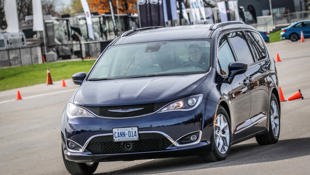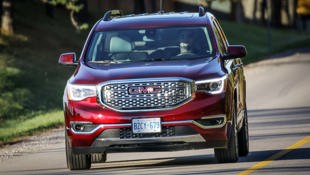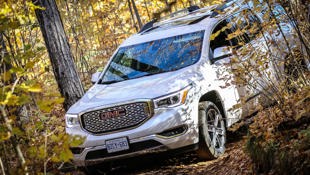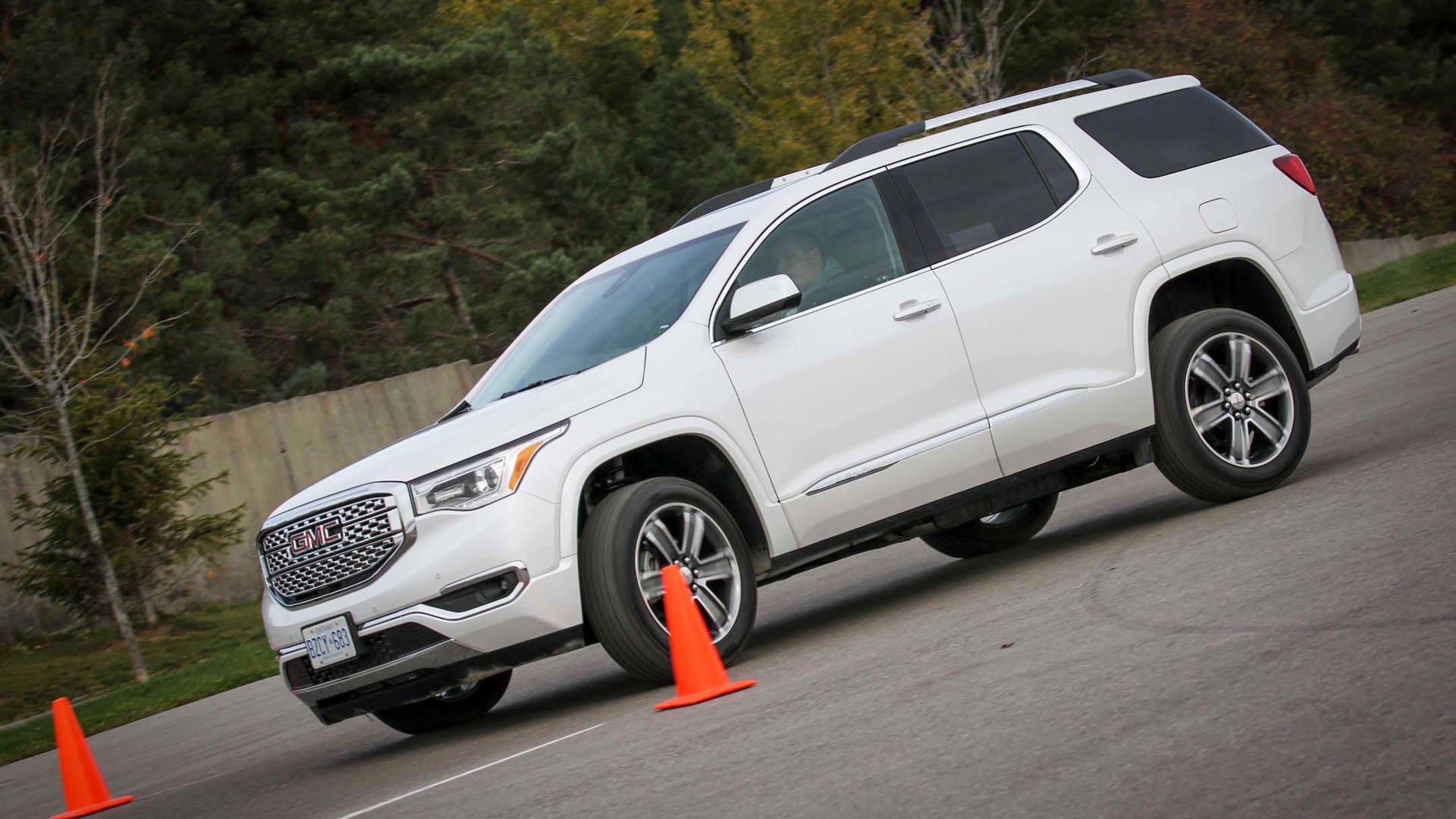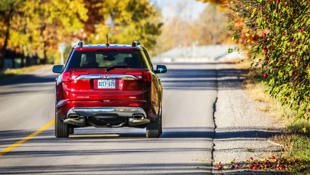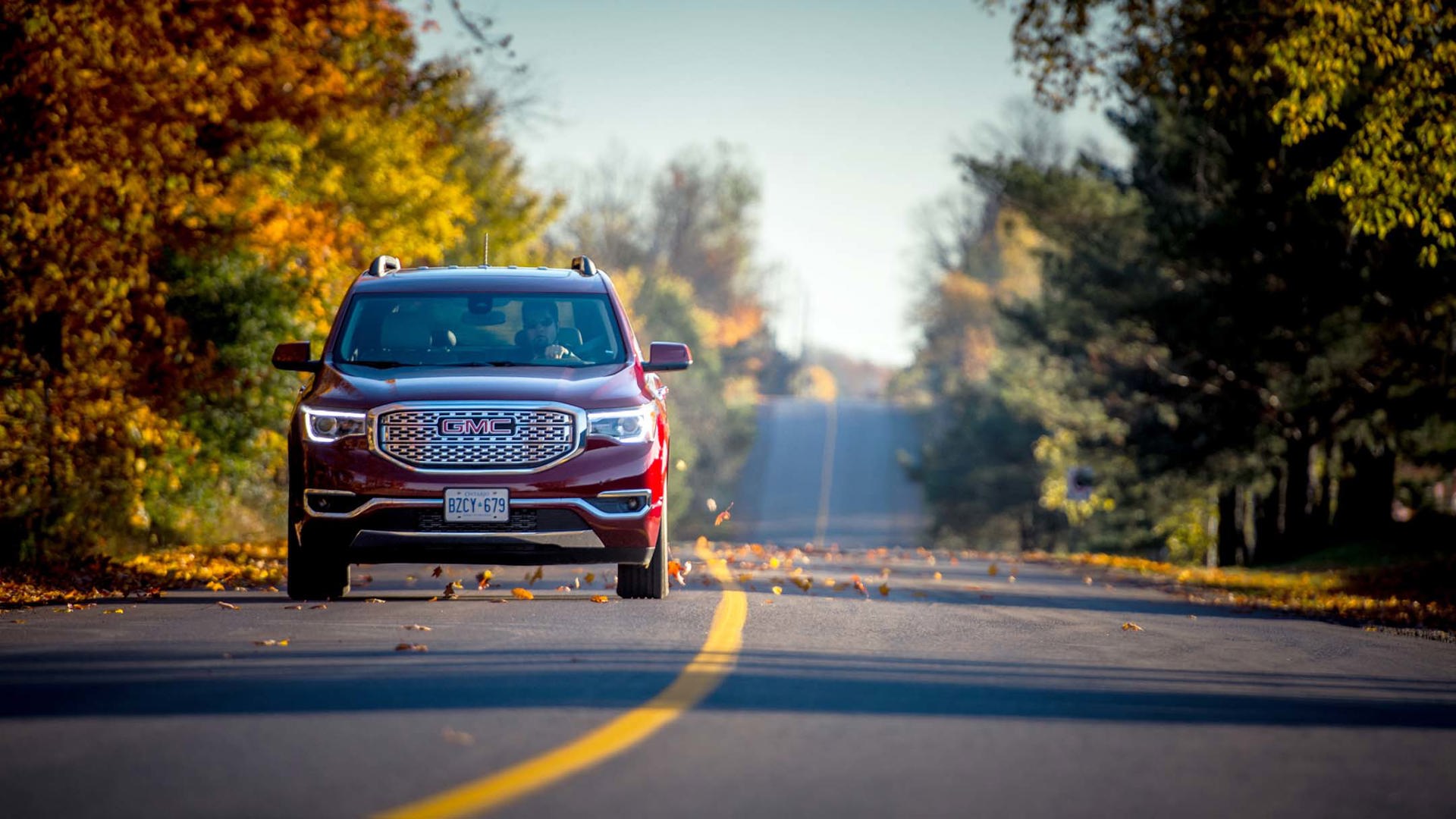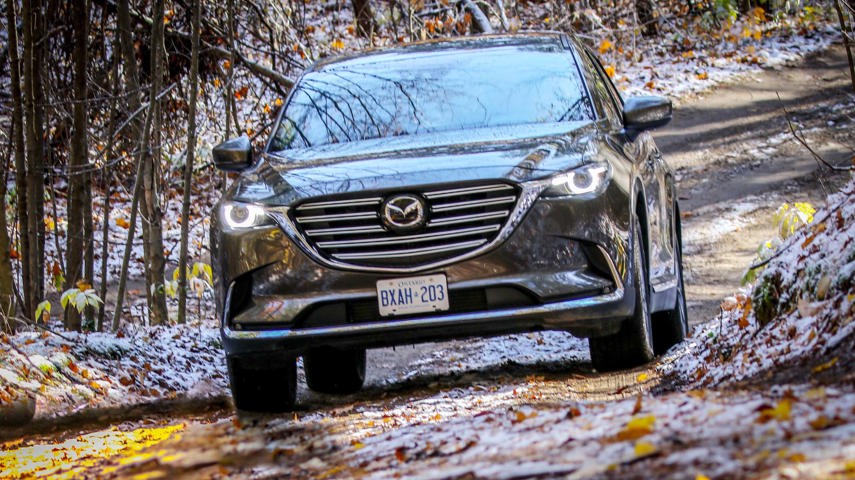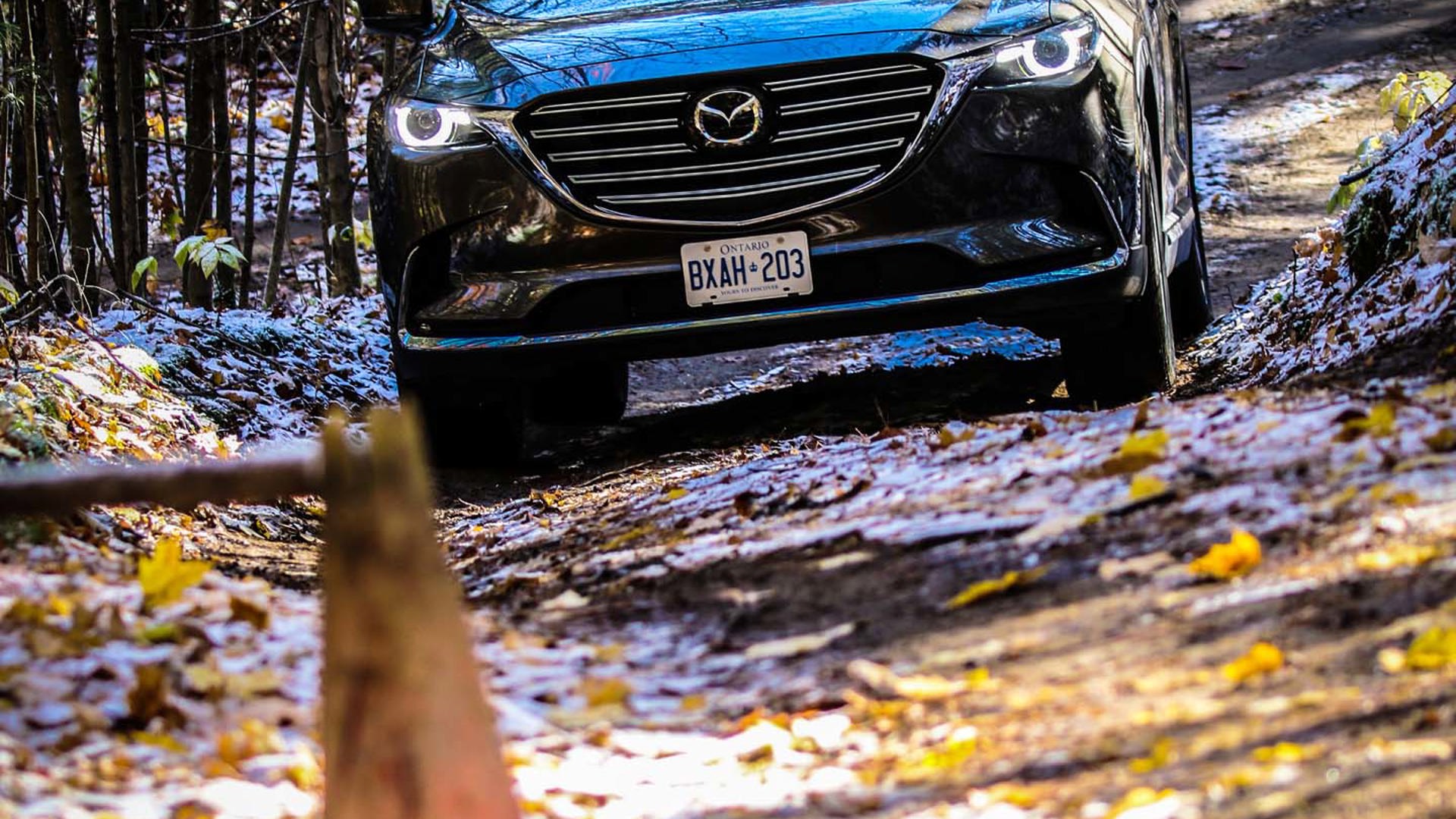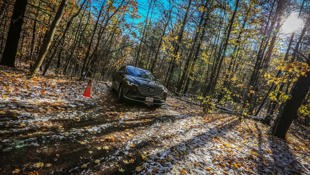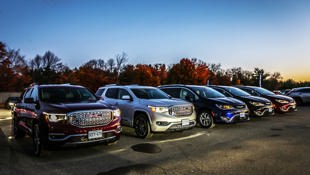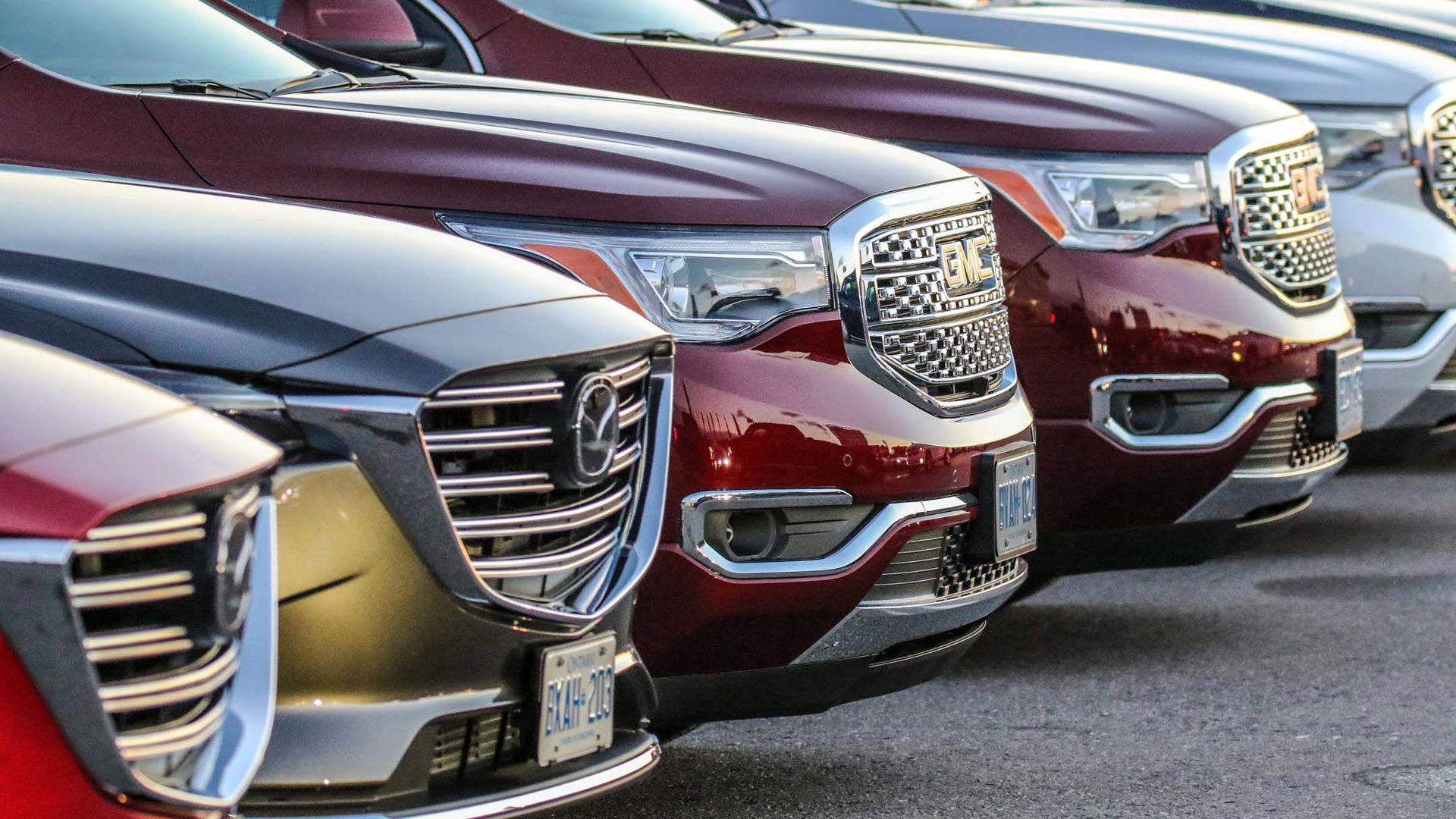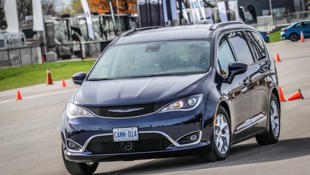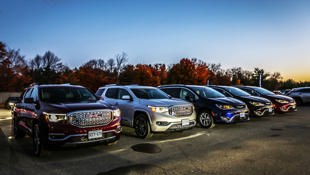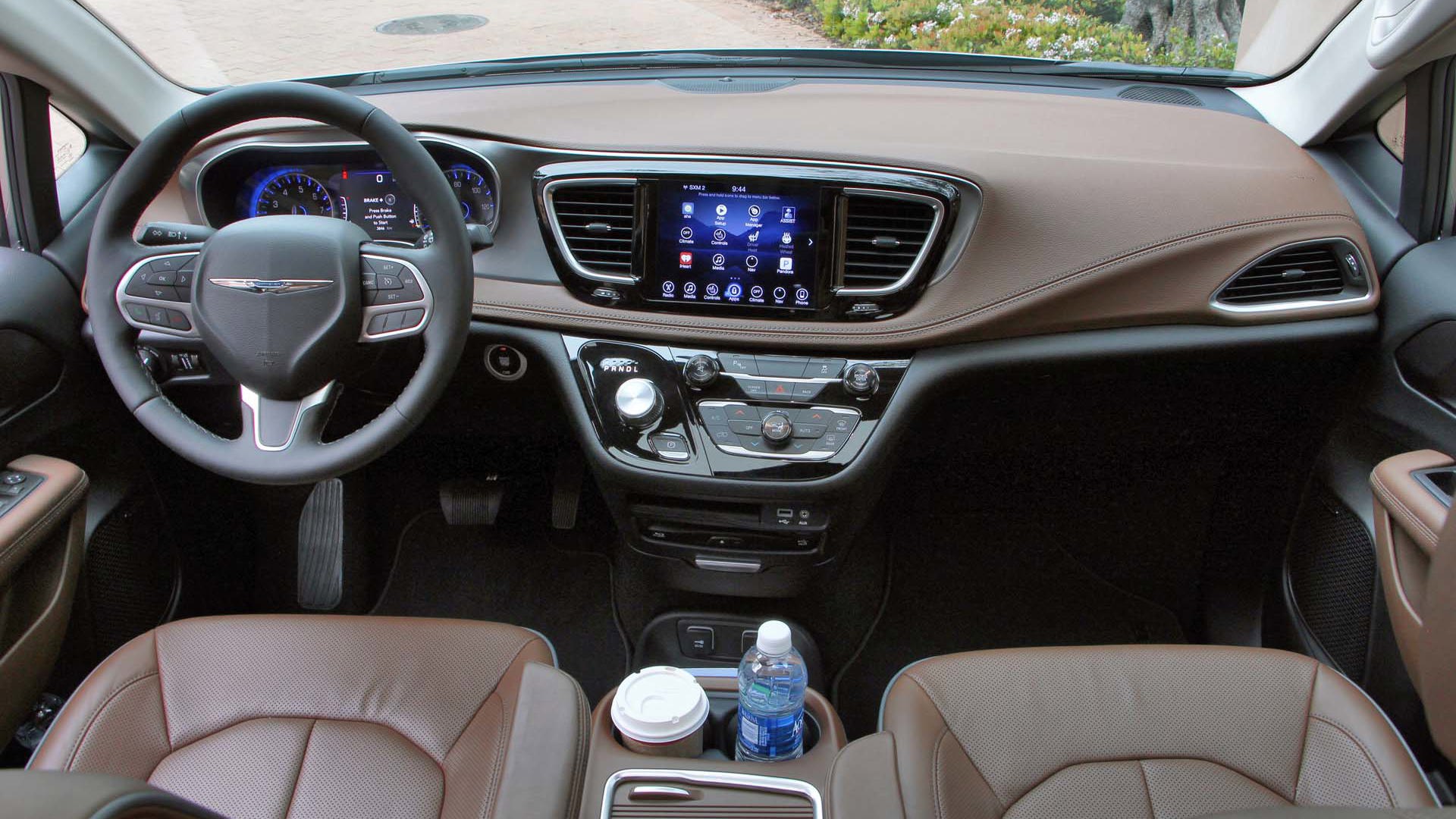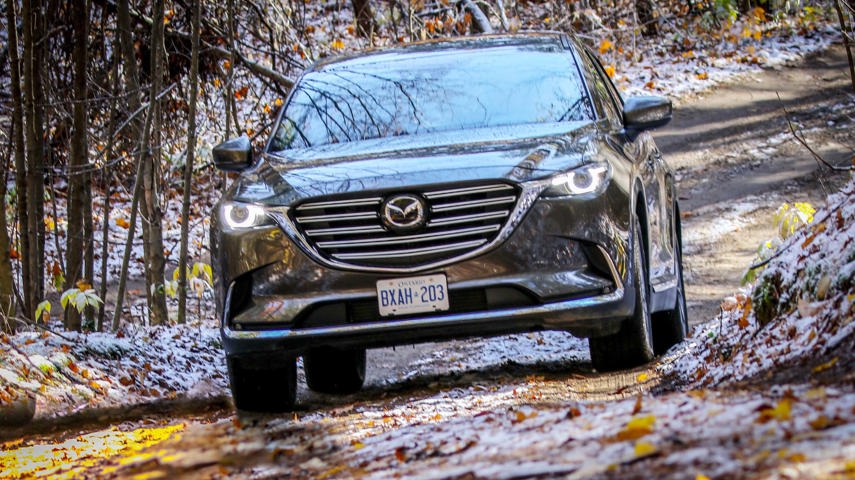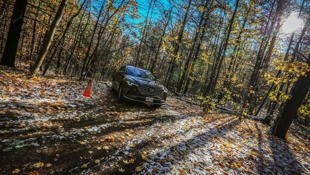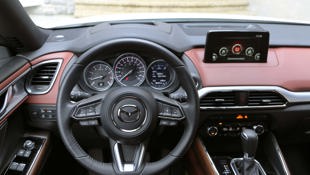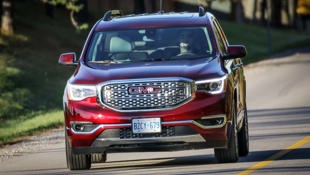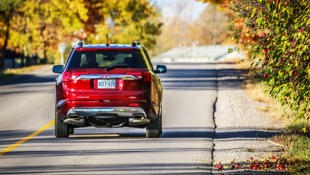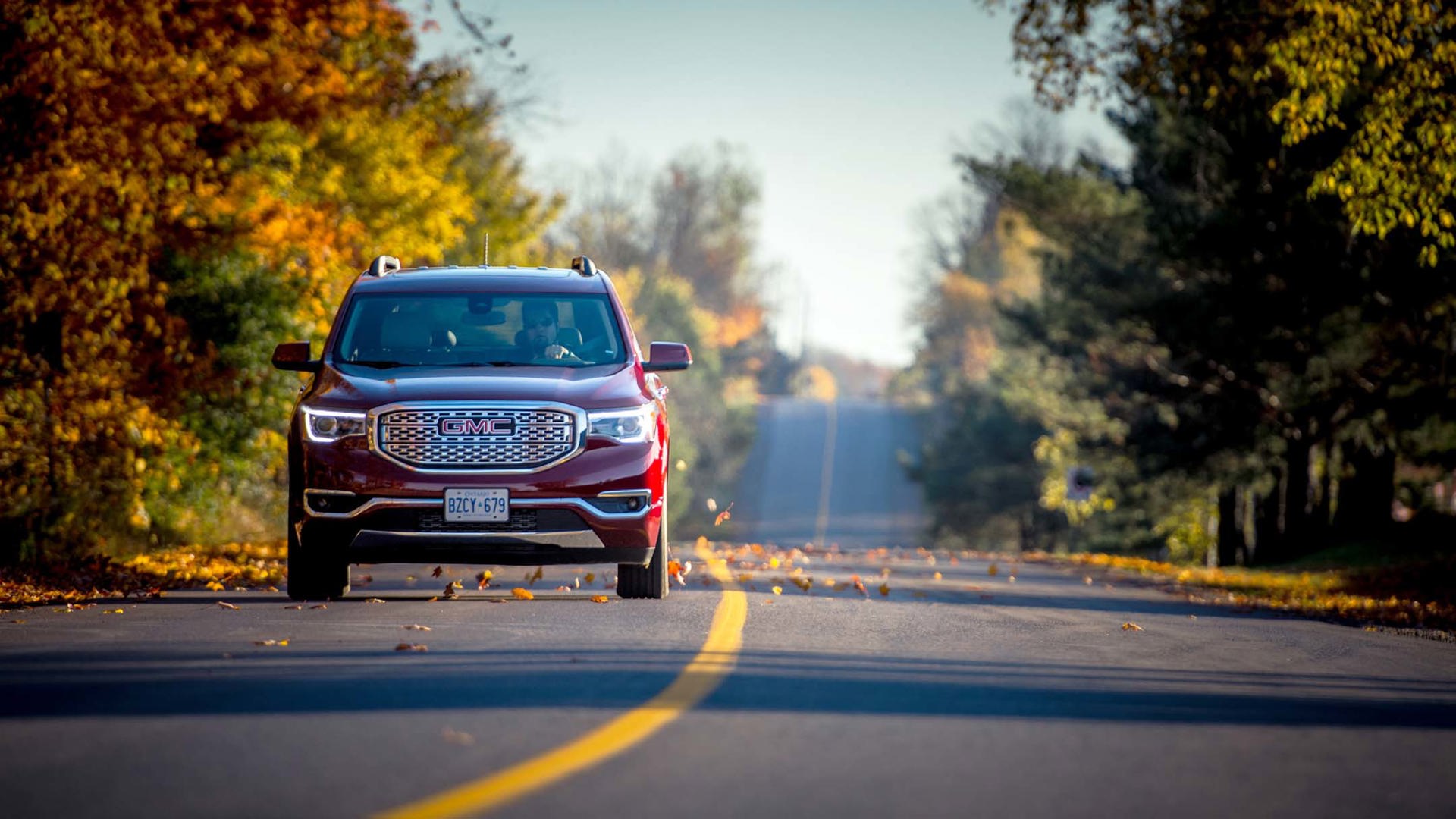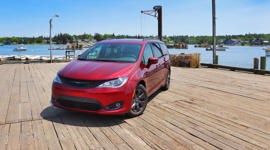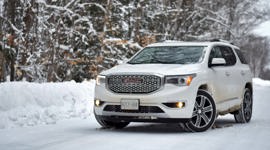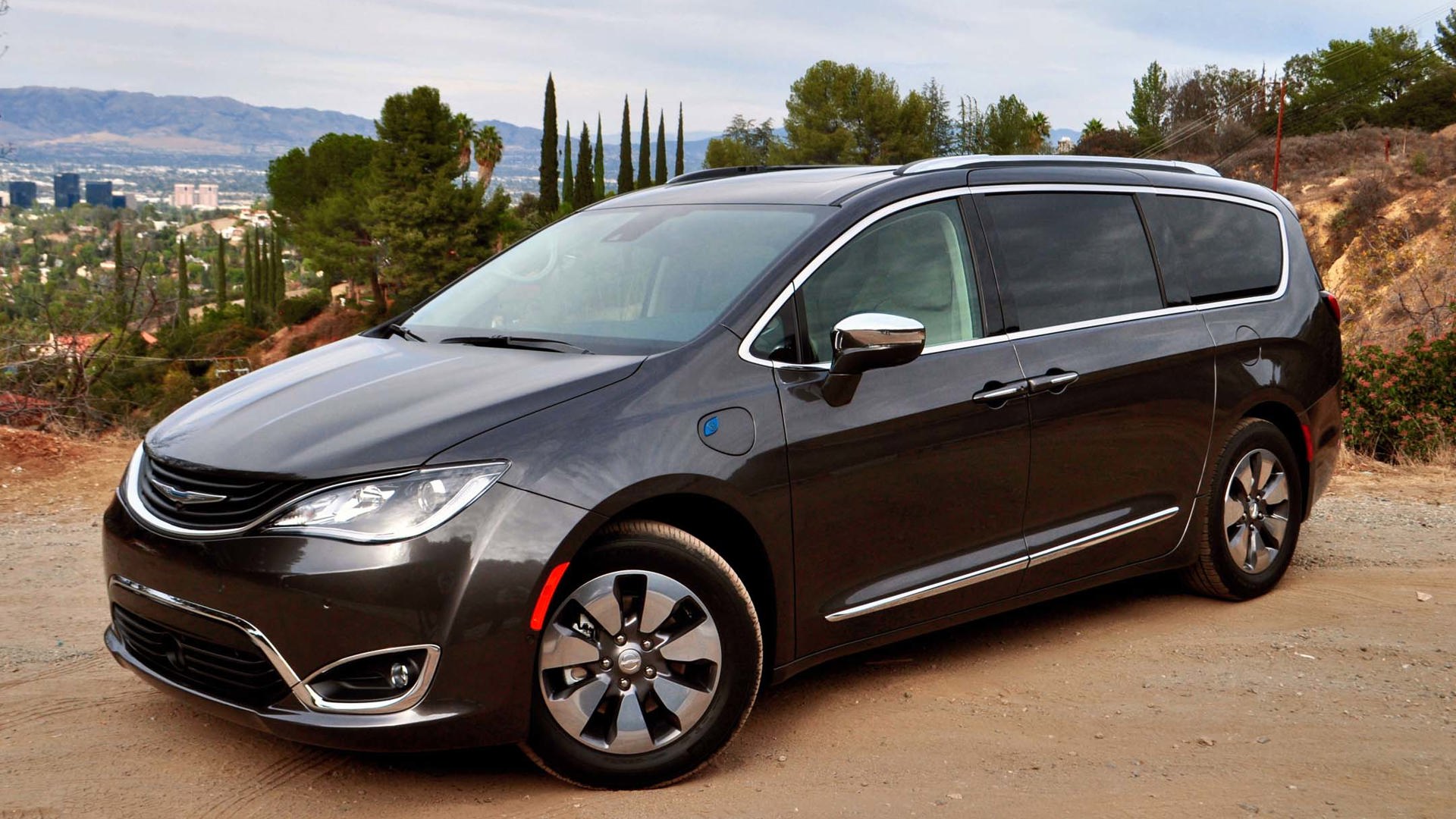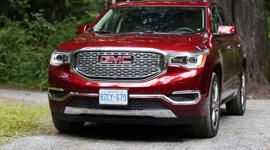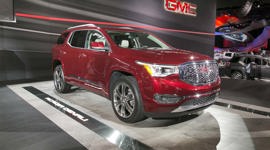At this year’s TestFest, the annual new vehicle assessment event hosted by the Automobile Journalists Association of Canada, the full-size utility vehicles category was the most fascinating of them all.
Although it featured just three cars, among themselves they couldn’t possibly be more different. It generates a great discussion of what Canadians perceive their needs to be versus what translates into reality on our roads.
And the curiosities kick off early, starting with: what on Earth is a minivan doing going head-to-head with a pair of SUVs?
I sympathize deeply with all involved on this point. The Chrysler Pacifica is a bold re-commitment to the minivan segment by the company that purports to have invented it, and it’s built in Windsor, Ontario. It clearly deserves consideration in the 2017 Canadian Car of the Year awards.
But with a complete dearth of vans entered otherwise – TestFest requires vehicles to either be new releases or have substantial updates to qualify – the Pacifica had nothing else equivalent to play with. A category that could have been just as aptly named “three-row family haulers” was really the only solution.
2017 Chrysler Pacifica ($51,155)
Truthfully, the Pacifica has a lot going for it. It bucks minivan convention by handling just as well as its peers in this category – if not even just a smidge better – thanks to some work FCA’s engineers put into the materials and design to improve torsional stiffness over the Town and Country. Plus, the Pacifica earns points for comfort and usability with those Stow ‘n’ Go seats and the extra-roomy third row, and that second-row tablet-like infotainment system is a great bonus for keeping the little ones busy on long trips.
Where the Pacifica quickly loses points with Canadians, though, is that while its 3.6L Pentastar V6 and nine-speed automatic transmission are fairly well-mannered, it’s only available in front-wheel drive. (The new platform accommodates all-wheel drive, too, but FCA decided to launch without it and decide on whether to add it in later. It is to weep.)
Combine that with the fact that it also doesn’t have the best price ($51,155 as tested) nor the best fuel economy (10.9 L/100 km combined) of this bunch, and you’ve pushed away an awful lot of people.
The Pacifica Hybrid is due to arrive shortly, and depending on how that looks it may reopen some of this discussion in next year’s awards. But for now – although I’m very glad that it had a chance to compete as it got top marks for comfort, roominess, ergonomics, and infotainment on my score sheet – the Pacifica is the first vehicle in this category I feel comfortable setting aside.
That said, if it’s a minivan you’re looking for, these downsides don’t concern you, and you have this much budget to play with, then all means make a bee-line for the Pacifica. In the high end of this segment, it’s currently the clear front-runner. Several lower-priced trims are being added which will bring it within budget reach of more Canadians (the LX trim starts at $37,995). Consumers searching at those price points would be well-served by cross-shopping with the Honda Odyssey (from $30,790) and Toyota Sienna (from $33,420) before dropping the dough.
Back to our full-size utility vehicles category. With the Pacifica out of the equation, that leaves two contenders in play: the Mazda CX-9 and the GMC Acadia. Truly, these are two cars meant for two different types of people.
2017 Mazda CX-9 ($47,100)
The Mazda CX-9 in Signature trim is an exercise in design acumen inside and out. The assertive forward-leaning nose, the sleek lines of the exterior, and the interior touches in real wood, chrome, and leather are all standout appointments.
It pairs a six-speed automatic transmission with Mazda’s 2.5L turbocharged I4 Skyactiv-G engine, which is new for this vehicle and makes 310 lb-ft of torque available at 2,000 rpm with little perceptible turbo lag. This makes it far and away the usable grunt leader in this category – and oh, by the way, it’s also the best on fuel (10.4 L/100 km combined) and on price ($47,100 for this top trim; as low as $35,300 if you drop the niceties).
As you dig deeper, some imperfections do come to light. The third row is tight enough to seem like an afterthought. The infotainment system is very usable and the map function is fabulously detailed, but it’s lacking some of the phone integration features that consumers are looking for most these days like Wi-Fi and Apple CarPlay or Android Auto.
Perhaps more poignant in our market and its inclement weather, though, is the lack of drive control. There’s a sport mode setting that delivers more playful shift points, but there’s nothing that lets you lock in low gear (apart from your own hands doing the shifting) and there are no traction control adjustments to be made or off-road assistance features such as hill-descent control. Basically, if you find yourself in a situation where you’d want to use these things then you need to put your faith in the all-wheel-drive system (available on all grades of CX-9 sold in Canada and standard from the second-tier GS-L trim and up).
Mind you, based on AJAC’s testing regimen, that’s not such a bad thing. The CX-9 performed well on the off-road course provided at the event’s venue, Canadian Tire Motorsport Park, faltering only slightly on the most treacherous obstacle, a steep, slippery, mud-caked incline. It made it over with a bit of right foot, but it would have been nice to have a bit more control over getting the CX-9 on its way.
2017 GMC Acadia Denali ($60,345)
And that’s where the GMC Acadia Denali comes in.
Styling is highly subjective, of course, but to my eye the Acadia is not quite as pretty as the CX-9. It’s a bit squarer all around, and my perception is that a wrap-around rear window that separates from the side windows at the C-pillar gives a truck an outdated look. Your mileage may vary.
Similarly, when I sat down inside I wasn’t immediately won over. The design is ergonomically good but not great, and the feel of the build and materials doesn’t seem to me to quite match up the $60,345 as-tested price tag. (Again, this can go as low as $35,095 if you drop out of the Denali space and give up some premium features.)
And on paper, its powertrain doesn’t come across as anything special. The naturally aspirated 3.6L V6 delivers 310 horsepower, the top number in this list, but it takes 6,600 revs per minute to get to that figure and a similar amount to get to the 271 lb-ft of torque (at 5,000 rpm). It’s great for select applications, but unlike the CX-9 you’ll rarely see the full extent of that power availability on your way to the grocery store. It’s also the thirstiest of these three at 11.6 L/100 km combined.
But, interestingly and in quite the opposite experience to the CX-9, it’s through sitting and spending some time in the Acadia where its strengths truly come to the fore.
GM is knocking it out of the park in infotainment functionality these days, and the Acadia is no exception – Apple CarPlay, Android Auto, and 4G LTE Wi-Fi hotspot capability are all available features.
And you want drive modes? It’s got them to spare. Two-wheel and all-wheel drive, sport, off-road, and towing mode are all available at the turn of a knob. In low gear and all-wheel drive mode, the Acadia took that muddy hill that the CX-9 faltered on and ate it for breakfast.
I’m genuinely very torn about which of these two deserves the overall title. I had to add up my TestFest scores, sit back and think hard about what each one really offers to the people who would be shopping for it, and stare befuddled at my scores again. It’s that close.
The GMC Acadia would be a heck of a truck for someone with a growing family – especially one with teens and twenty-somethings addicted to their smartphones – and a frequent need to access its full capability. Someone who lives in the snow belt and runs to the cottage every other weekend, for example, would appreciate it much more than a suburban dweller with a shorter commute.
But the CX-9 puts a very stylish, usable, fuel-efficient, and pleasant-to-drive vehicle within an attainable price for precisely that same suburban two-kid Canadian family that would want it most.
For that, I’ll predict that AJAC hands the win to the Mazda CX-9. But only by its forward-leaning nose.
Alternatives
Does that make the Mazda CX-9 the overall segment leader? In the context of this category that’s a difficult question to answer since it covers such an enormous swath of the industry.
In my opinion the new CX-9 is one of the best value large SUVs out there so long as you don’t really need the flexibility of having that third row, which you’d only want to use very occasionally. But if the third row is truly unnecessary for you then you can safety cross-shop against some of the larger two-row options such as the Nissan Murano (from $30,748) or the Ford Edge (from $31,099), which may knock a few thousand dollars off the final price depending on what other features you’re looking for.
If you do need the third row but are shopping on a similar budget, there are several great options that might not be as wood- and chrome-lined but bring their own strengths to the table: the new Hyundai Santa Fe XL (from $32,199) is excellent, the Kia Sorento (from $27,695) won autoTRADER’s three-row crossover comparison earlier this year (which, to be fair, the Mazda CX-9 was not ready in time to participate in), and the Toyota Highlander will go on sale shortly (pricing not yet announced; 2016 starts at $33,555) with a new suite of safety features that’s going to make it a much more stout contender.
If you have a bit more money to spend, the winner of last year’s SUVs over $60,000 category at TestFest, the 2017 Volvo XC90 (from $55,650), is well worth a look as well.
By the numbers
|
Model |
As-tested price |
Horsepower (hp @ rpm) |
Torque (lb-ft @ rpm) |
Transmission |
Fuel economy (L/100 km, cty/hwy/cmb) |
|---|---|---|---|---|---|
|
Chrysler Pacifica |
$51,155 |
287 @ 6,400 |
262 @ 4,000 |
9AT |
12.9/8.4/10.9 |
|
GMC Acadia Denali |
$60,345 |
310 @ 6,600 |
271 @ 5,000 |
6AT |
13.3/9.5/11.6 |
|
Mazda CX-9 |
$47,100 |
227 @ 5,000 |
310 @ 2,000 |
6AT |
11.5/8.9/10.4 |
